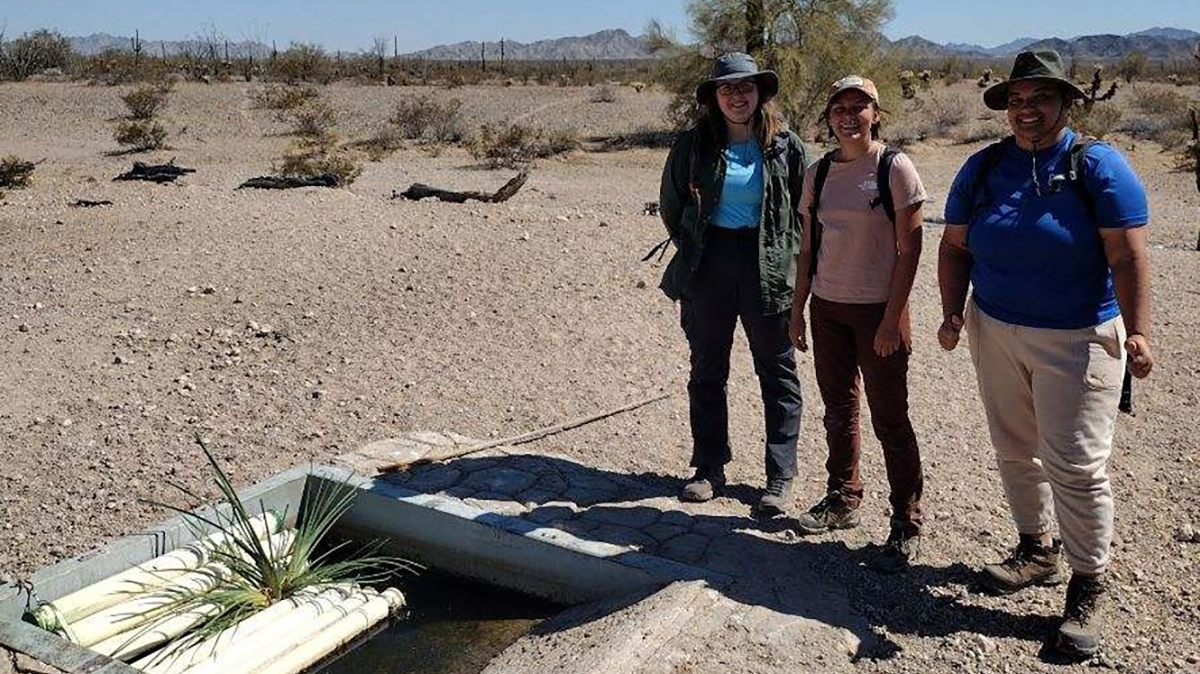Tracking Pronghorn Populations
Student Analyzes Fecal Pellets to Uncover Pronghorn Population Secrets in the Sonoran Desert
Megan Carr’s journey from Meridian to the Sonoran Desert where she studied the local pronghorn populations was a lesson in enlightenment.
Carr loves animals and planned to study for a career as a veterinarian. Upon arriving at University of Idaho however, Carr learned the College of Natural Resources offered degrees that led to students working outdoors with wild critters.
“I hadn’t known there were other occupations in which you could work with animals,” Carr said.
The new knowledge was a game changer, she said.
“I switched my major within the first two weeks of getting here,” she said.

Carr, who graduated in Spring ’24 with degrees in conservation biology and wildlife resources, spent part of a summer in Arizona’s southern desert, a flat, hardpan of heat waves, thorny plants and mesquite. It’s the home of the Sonoran pronghorn, a quick-footed ruminant often called antelope, although the species is more closely related to giraffes.
Carr worked with other students collecting fecal pellets, or pronghorn droppings, around watering holes. Genetic information would be extracted from the droppings to identify sex and individuals as part of a larger study to estimate their population that U of I has participated in for more than a decade.
We are providing critical information for the population size and survival of this endangered species, Lisette Waits, distinguished professor of wildlife resources
“This was the first real field research I had done, and it was amazing being out there, seeing this landscape, and doing the collections,” Carr said. “It was exciting to be working outside, even in the heat, I really enjoyed it. It was a great experience.”
Pronghorn are the fastest land mammals in the Americas, with running speeds of up to 55 mph. Of the five recognized subspecies of pronghorn living in the western U.S., the Sonoran pronghorn is the most threatened. Listed as endangered under the Endangered Species Act, the pronghorn is found in southwestern Arizona and northwestern Sonora, Mexico where researchers have been working on a recovery plan.
“We are providing critical information for the population size and survival of this endangered species,” said Lisette Waits, distinguished professor of wildlife resources.
Collecting pellets and extracting DNA is a noninvasive way to track the animals without capturing endangered species that are vulnerable to stress, Waits said.
“The DNA from pronghorn fecal pellets provide an alternative method for monitoring the abundance and sex ratio of the endangered Sonoran pronghorn across different locations in the Sonoran Desert,” she said.
For Carr’s capstone project as an intern in Waits’ lab, almost 700 pellets were picked up at 11 sites including human-made watering holes that were regularly visited by pronghorns in the otherwise harsh, waterless landscape. Researchers also regularly replenished feeding areas with protein rich hay to attract pronghorn.
“The animals would congregate making it easier for us to find their pellets,” Carr said.
She returned to the lab on the Moscow campus to analyze the fecal pellets and obtain a count of individuals per location.
The research project provided Carr with a better understanding of field studies —supplementing what she learned in the classroom.
Although Carr graduated with a bachelor’s degree, she remains a U of I student. She will attend the McCall Outdoor Science School (MOSS) as an environmental educator.
“I want to teach young people about the outdoors, animals and conservation,” Carr said. “The field work I did on this project will translate into teaching students about animals and the environment.”
MOSS programming and facilities are operated by U of I’s College of Natural Resources and provide environmental education to K-12 students from throughout the region.
Lisette Waits, Ph.D.
Distinguished Professor of Wildlife Resources
Article by Ralph Bartholdt, University Communications
Photos by Megan Carr, Neal Herbert and the National Park Service
Published in July 2024








